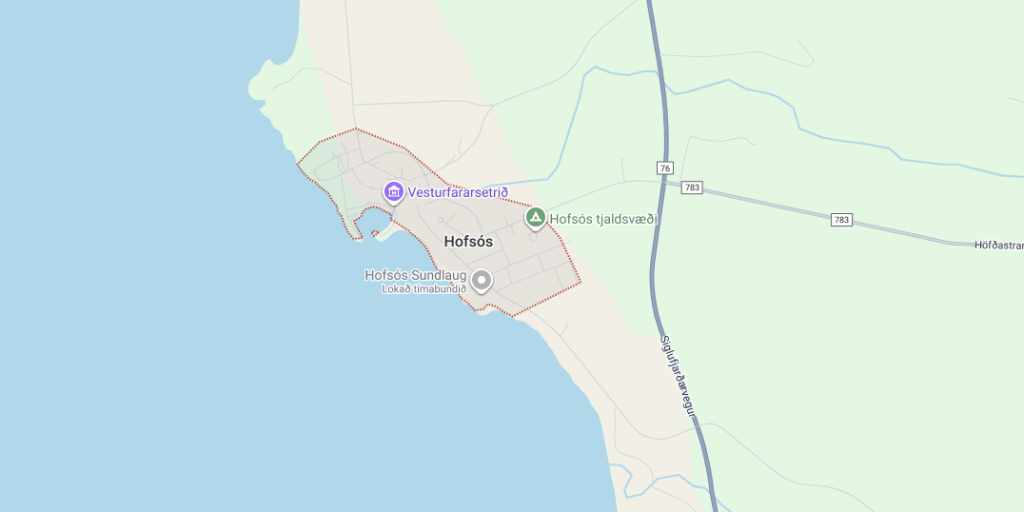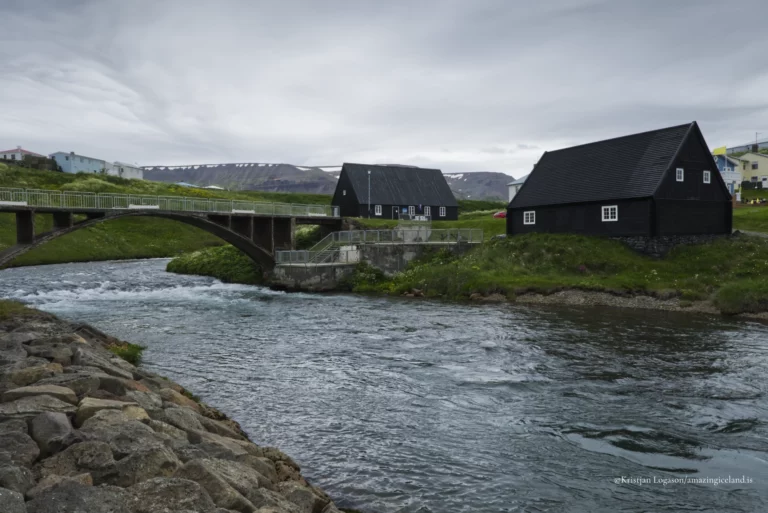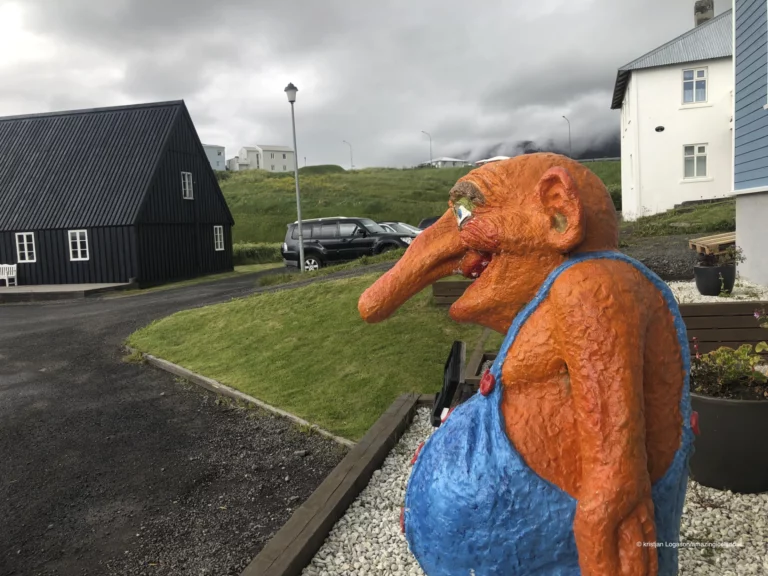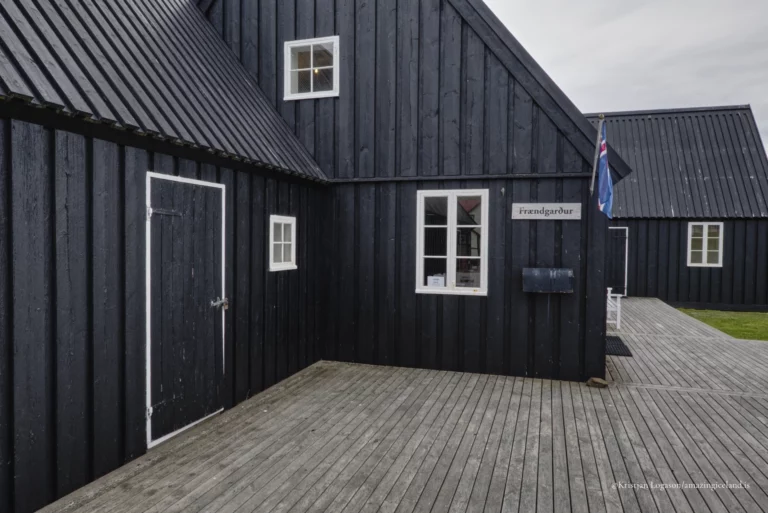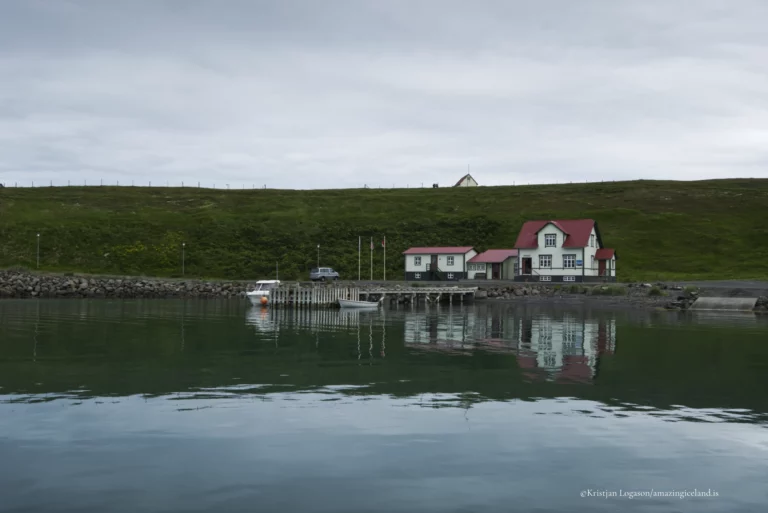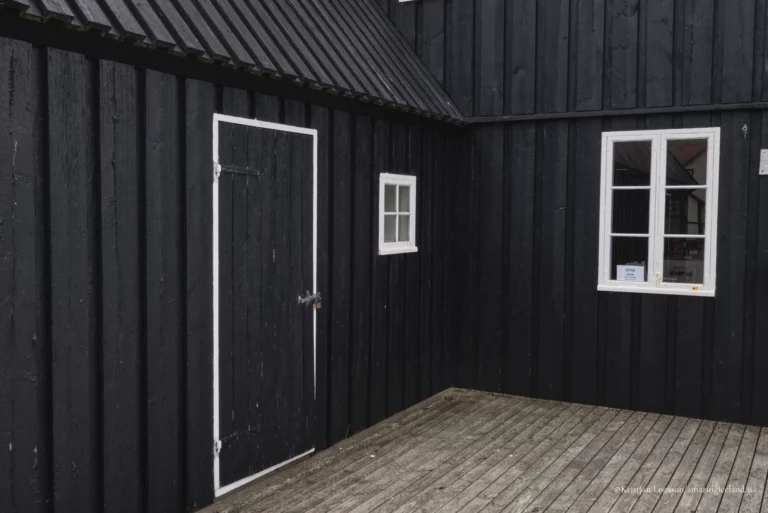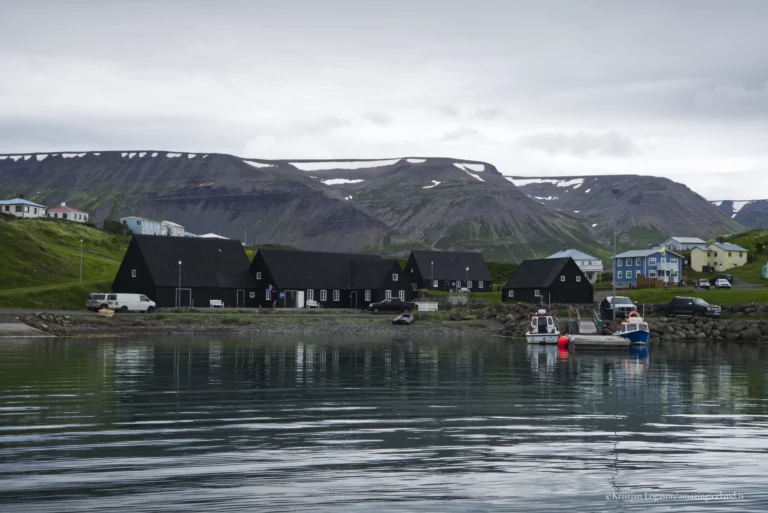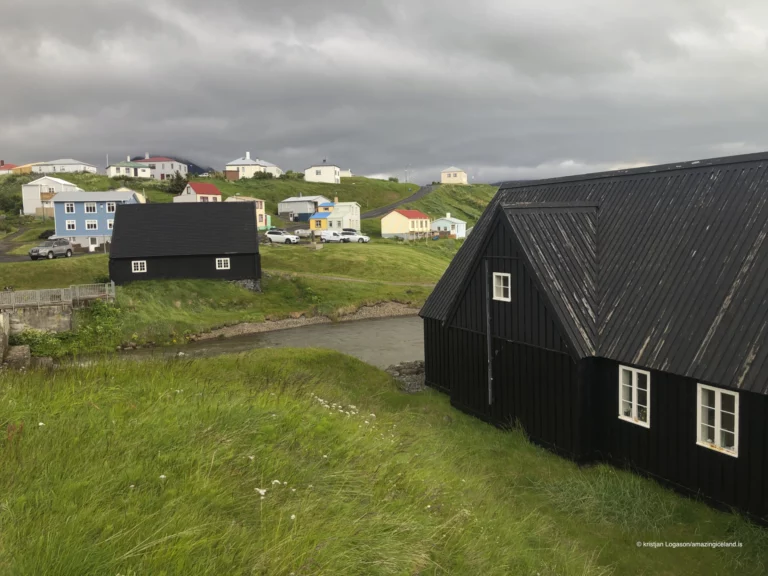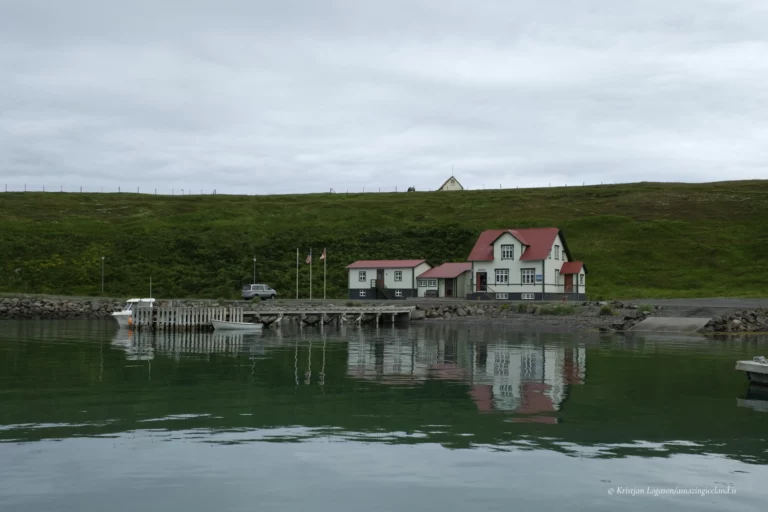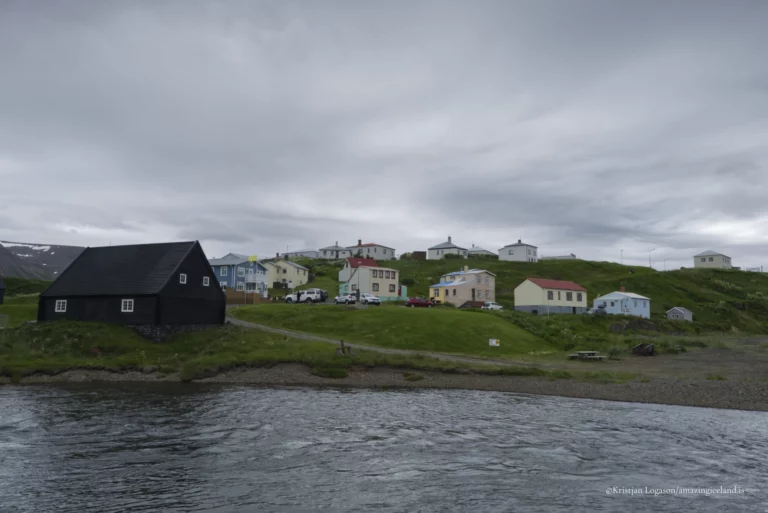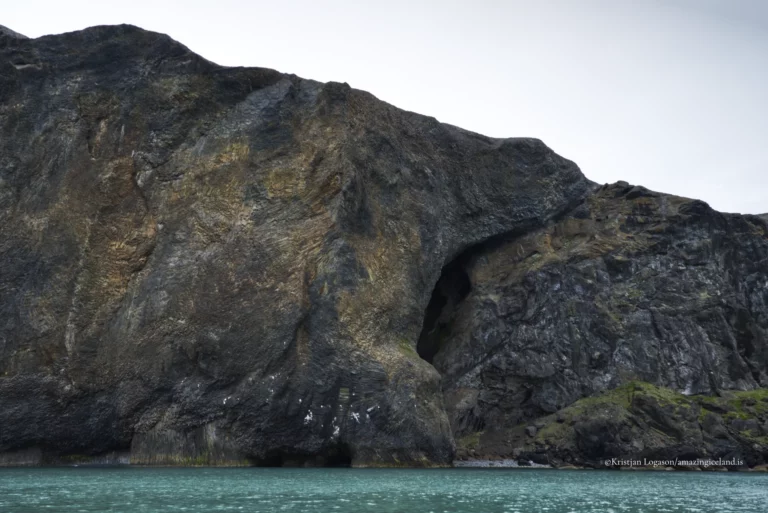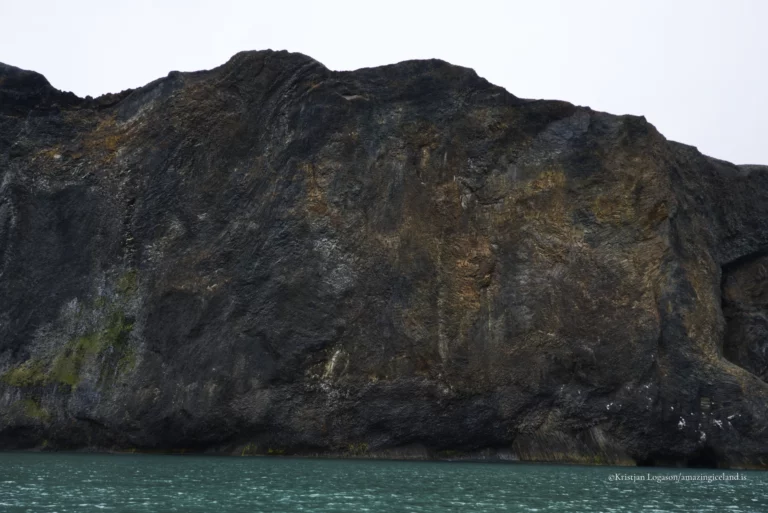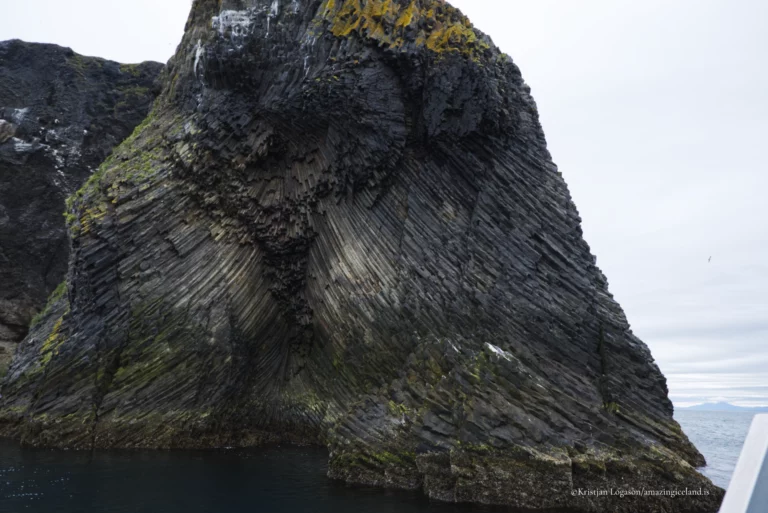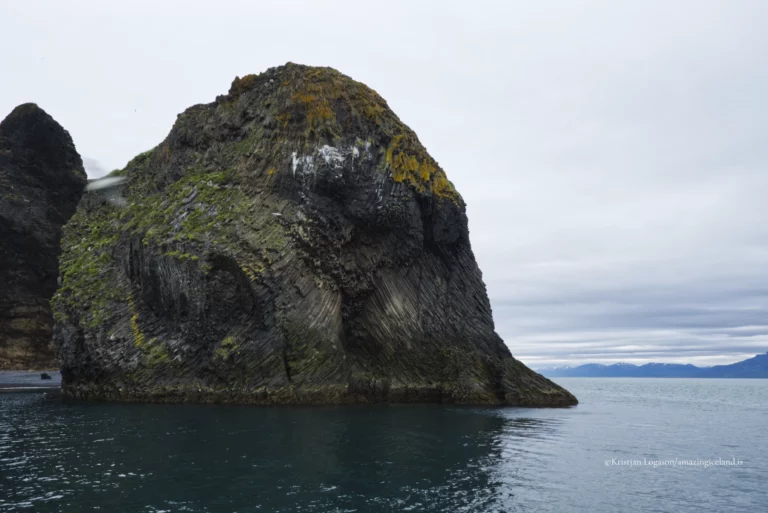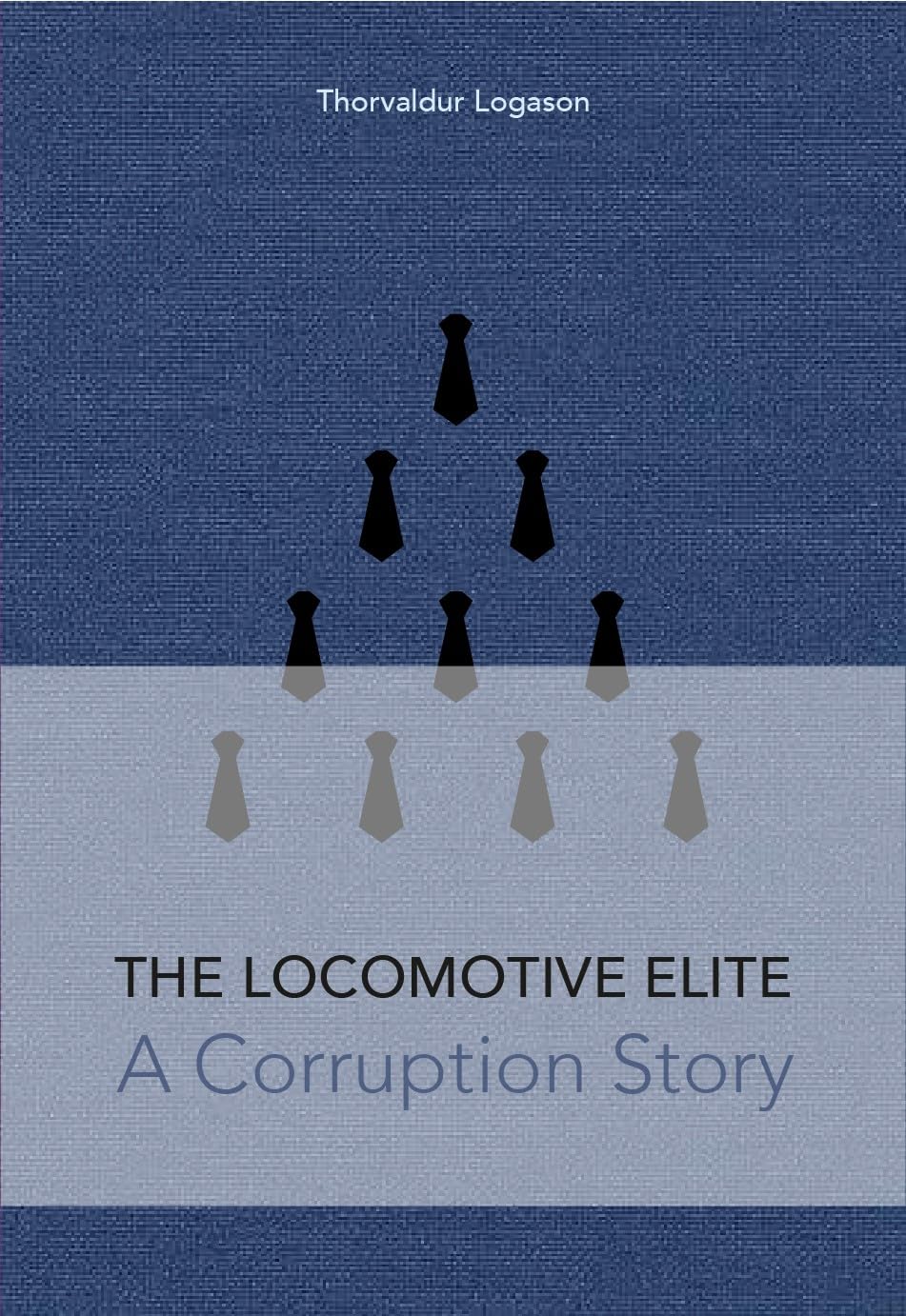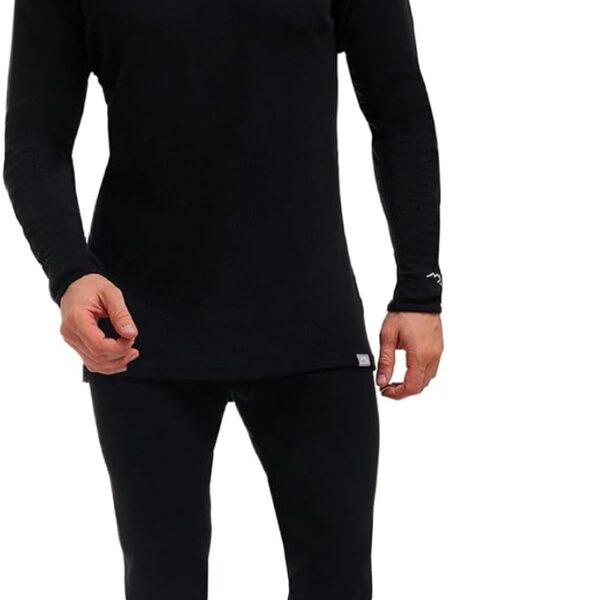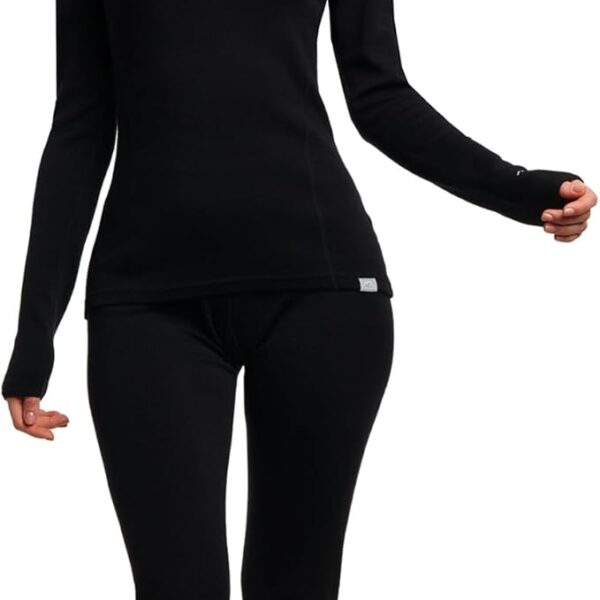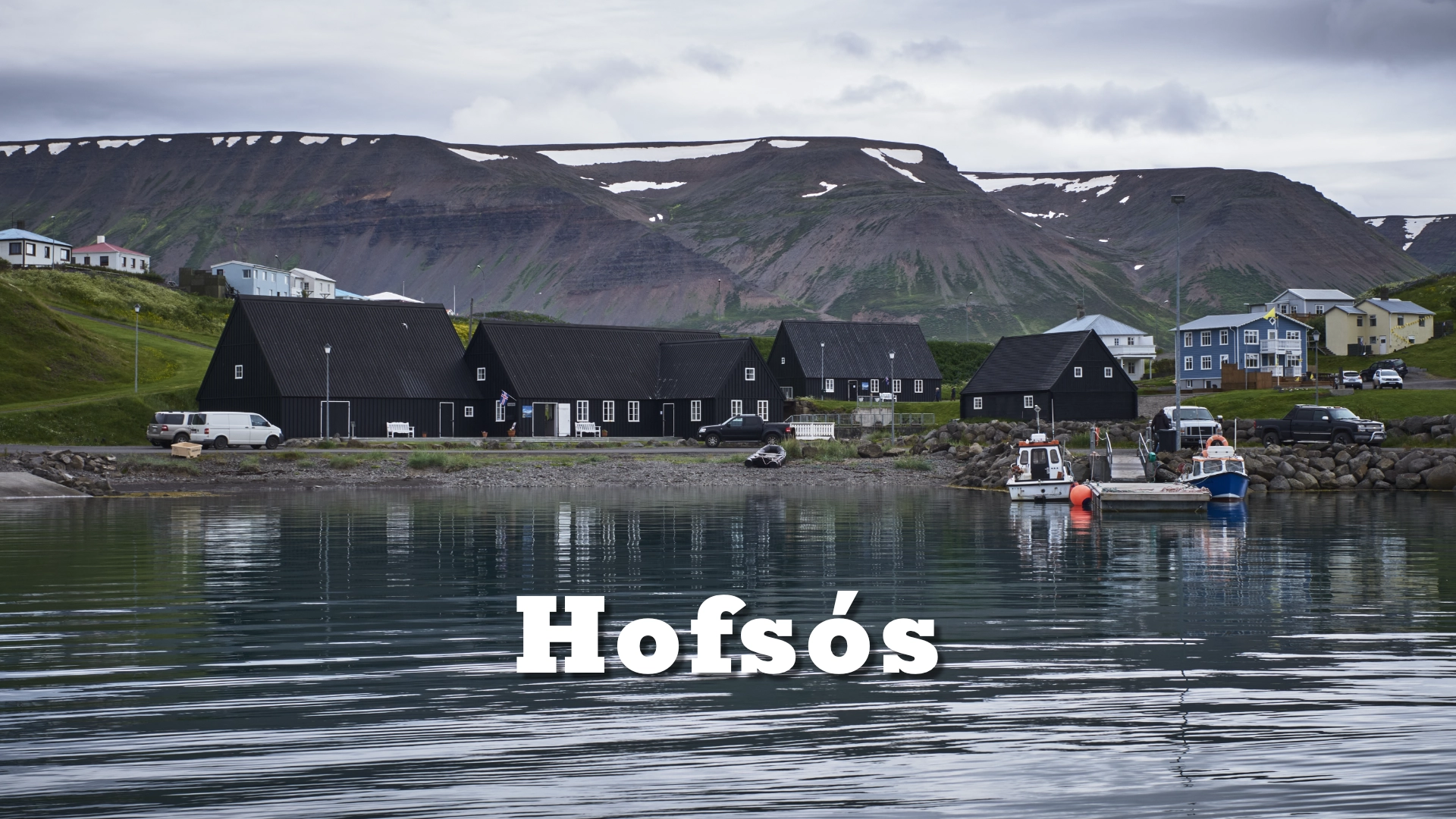
Hofsós, a small fishing settlement on the eastern shore of Skagafjörður in North Iceland, is one of the oldest trading centers in the country. While modest in size today, it carries immense historic weight. Hofsós is best known for its role in the great wave of emigration to North America in the 19th century, a story remembered at the award-winning Emigration Center. Visitors come for the views, the history, and the striking blend of heritage and modern architecture that defines this little village.
Hofsós in Skagafjörður
Hofsós lies on the eastern coast of Skagafjörður, one of Iceland’s broadest fjords. Sheltered by offshore skerries, it has long provided a natural harbor for fishing and trade. Merchants from Denmark began trading here in the 16th century, and the settlement grew into a regional center during the era of the Danish trade monopoly (1602–1787).
Several well-preserved timber houses from that period survive today, most notably Pakkhúsið (the old warehouse), which was built in 1777. These buildings give Hofsós a rare architectural character in an Icelandic context, making the village not only historically important but also visually distinctive.
In the late 19th century, Hofsós became closely tied to one of the most dramatic chapters in Icelandic history: the mass migration to North America. Facing volcanic eruptions, harsh winters, poverty, and limited opportunities, thousands of Icelanders chose to leave for Canada and the United States. Ships carrying hopeful emigrants often departed from Hofsós, making it one of the most significant exit points in the country.
The stories of these emigrants are preserved at The Icelandic Emigration Center (Vesturfarasetrið), housed in the historic trading buildings along the harbor. Through photographs, letters, artifacts, and interactive exhibits, the museum tells the story of families who left everything behind to seek a new life across the Atlantic. It also explores how Icelandic communities abroad preserved language, culture, and traditions in their new homes.
The emigration theme resonates deeply in Hofsós, where the quiet harbor still feels like a threshold between Iceland and the wider world. Many visitors with Icelandic ancestry in North America come here to trace family stories, making Hofsós a place of memory and reconnection as well as history.
Though small — with only a few hundred residents — Hofsós has become a destination blending past and present. The village is perhaps most famous today for the Hofsós swimming pool, designed by architect Jón Guðmundsson and opened in 2010. Perched on a hillside, its infinity edge overlooks Skagafjörður, creating one of the most breathtaking swimming experiences in Iceland.
The harbor area is still active with small-scale fishing and local life, but it is also where visitors spend much of their time, exploring the historic buildings and the Emigration Center. The combination of heritage architecture and modern facilities gives Hofsós a distinctive feel compared to other North Icelandic villages.
For travelers, Hofsós offers more than history: the surrounding landscapes of Skagafjörður are home to horse breeding, turf houses, and wide valleys, all accessible from this quiet coastal hub. It is a place where one can sense Iceland’s past while enjoying the calm rhythm of a living village.
Interesting facts:
-
Hofsós is one of the oldest trading places in Iceland, with continuous use since the 16th century.
-
The timber house Pakkhúsið, built in 1777, is one of the best-preserved 18th-century trading buildings in Iceland.
-
From the 1870s to the early 1900s, nearly 20% of Iceland’s population emigrated, many of them via Hofsós.
-
The Emigration Center is a key institution for Icelandic diaspora studies and receives many visitors of Icelandic descent from Canada and the U.S. each year.
-
The Hofsós swimming pool has been called one of the most beautiful in Iceland due to its panoramic fjord views.
The Locomotive Elite
What do Donald Trump and Iceland’s Locomotive Elite have in common?
Far more than you think.
In The Locomotive Elite, you’ll uncover how a tiny clique in Iceland captured extensive control—of banks, courts, media, and even the central bank.
For decades they ruled, first democratically, then through corruption and in the end through crime, enriching themselves and their cronies while dismantling oversight.
The result?
One of the most spectacular financial collapses in modern history.
Photography tips:
-
Harbor heritage: Frame the old trading houses with fishing boats or the fjord behind for a sense of continuity between past and present.
-
Details: Capture the textures of the timber buildings, windows, and turf walls nearby.
-
Migration theme: Photograph the Emigration Center exhibits, letters, or portraits (with permission) for storytelling images.
-
Swimming pool: The infinity edge against Skagafjörður is best photographed in evening light.
-
Drone shots: Aerial images reveal the fjord’s breadth and how Hofsós nestles against the shoreline.
